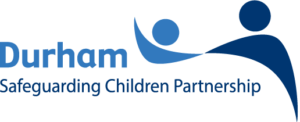As parents and carers, we want our children and young people to grow up safe and well and for them to feel happy and supported. We often pay attention to making sure that children are safe at home, however it’s just as important to be able to spot and act on the risks that children and young people face when they are away from home. This is known as Harm Outside the Home (HOTH).
Harm Outside the Home can include things like:
- ‘peer on peer’ abuse – where children and young people harm other children and young people
- children and young people being take advantage of (exploited) by others – including sexual exploitation and criminal exploitation
- online harm and grooming
- bullying (in person or online)
- involvement in gangs or violence towards other young people
- radicalisation – where children or young people are exposed to extreme views.
This harm can happen online, in schools, in parks and other public spaces, or with groups of friends.
Spotting the signs
Spotting the signs of harm and knowing how to respond can make a huge difference to keeping your child safe. Every child is different, however, changes to your child’s behaviour could be a sign that something is happening to them.
Possible signs that a child may be coming to Harm Outside the Home include:
- increased secrecy or avoiding discussions about friends or where your child is spending time
- spending time with older people or unfamiliar friends
- distancing themselves from family and long-standing friends
- going missing from home or school
- receiving money or gifts and you don’t know where these have come from
- getting involved in crime or drug use
- being secretive about online activity
Getting help and support
If you are worried about your child, help is available.
Many worries can be supported by the practitioners and services already involved in your child’s life, such as schools, your doctor, school nurse, family hubs, youth or sports clubs and any other community-based services supporting children and families.
Local family hubs have a fantastic offer of support to children and families and welcome parents and carers popping in to have a chat about the support on offer.
If worries start to increase, then children and their parents might need help from more experienced practitioners. This is known as family help, and it could include support from a family worker or even a social worker. When children are coming to Harm Outside the Home we always work with parents as partners, as you know your child best, and we listen to what you and your child need. This level of support means bringing the different services supporting you and your child together to create a plan. Monthly Team Around the Family Meetings (TAFs) can be held to check that everyone is doing what they need to so that things get better for your child.
Where there are lots of worries for your child and they are being seriously harmed or they are at risk of being seriously harmed, then you and your child will receive support from a social worker alongside the other services supporting you. This is called a Child Protection Plan, and it may mean that more specialist services are needed to help your child be safe. This could include support from the Adolescent Safeguarding Team (ASET) or ERASE, who have specialist workers focused on Harm Outside the Home.
Please look out for more information and resources coming soon.
If you have worries about your own child or another child or young person, you can speak to Children’s Social Care First Contact on 03000 267 979 to share your worries.
